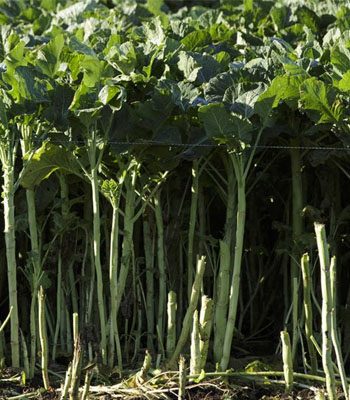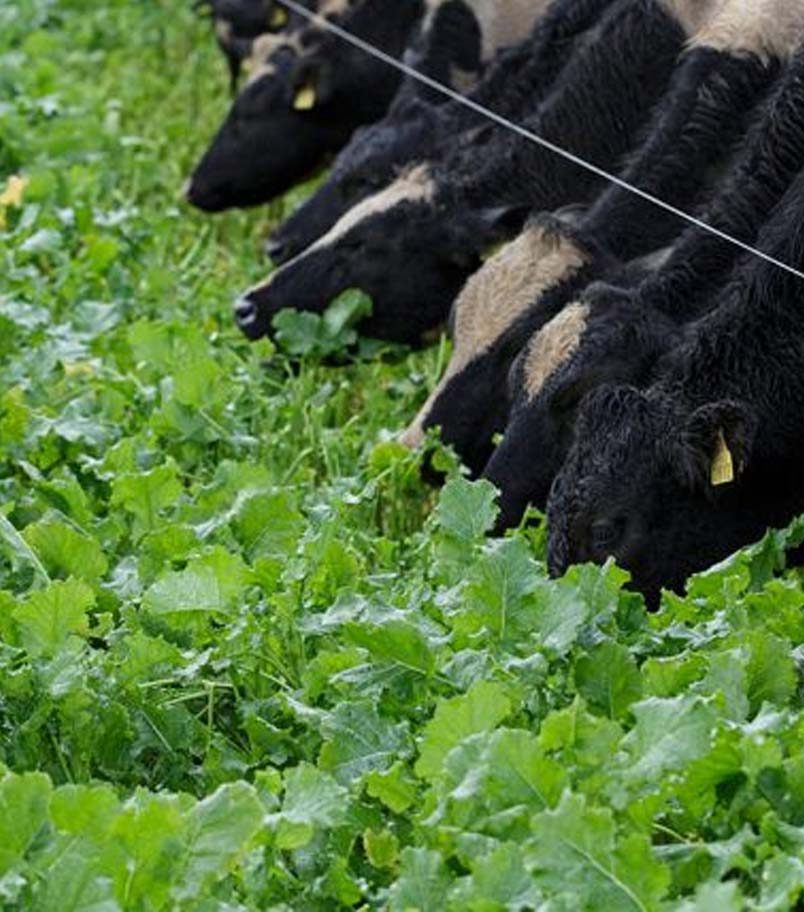Chris Ruffley, Assistant Farm Manager at Harper Adams University, first used brassicas as a catch crop but soon realised their potential as a main crop for out-wintering youngstock. Achieving growth rates last year of 1.29kg/day, he’s now using Maris Kestrel kale for all his in-calf dairy heifers.
We actually first out-wintered dairy youngstock when we were tight for space in the sheds but haven’t looked back. The animals do better outside both in terms of growth rate and health.
We achieved growth rates of 1.29kg/day last winter, far exceeding our target of 0.9-1.0kg. Liveweight gain tends to be impacted when they first go indoors and again when they go out to graze in the spring, so by out-wintering we bypass those growth checks. Their health is also much better.
As well as haylage for fibre, we give bolus minerals. This is critical to avoid any mineral deficiencies, particularly iodine, but is the only health-related issue we need to address. I don’t have any concerns about the cold as the animals are well adapted; it’s only a long, wet winter which can challenge us. Fortunately, we’re not tight on space so can use drier sites and keep stocking rates on the low side.
We also find kale and haylage far more cost effective, reducing feed costs considerably. We use the Maris Kestrel kale because it produces a decent yield and healthy crop. It’s a good bulky crop, not growing too high. The animals eat plenty of it and grow well. It remains my number one choice.
Chris Ruffley, Assistant Farm Manager at Harper Adams University, first used brassicas as a catch crop but soon realised their potential as a main crop for out-wintering youngstock. Achieving growth rates last year of 1.29kg/day, he’s now using Maris Kestrel kale for all his in-calf dairy heifers.
We actually first out-wintered dairy youngstock when we were tight for space in the sheds but haven’t looked back. The animals do better outside both in terms of growth rate and health.
We achieved growth rates of 1.29kg/day last winter, far exceeding our target of 0.9-1.0kg. Liveweight gain tends to be impacted when they first go indoors and again when they go out to graze in the spring, so by out-wintering we bypass those growth checks. Their health is also much better.
As well as haylage for fibre, we give bolus minerals. This is critical to avoid any mineral deficiencies, particularly iodine, but is the only health-related issue we need to address. I don’t have any concerns about the cold as the animals are well adapted; it’s only a long, wet winter which can challenge us. Fortunately, we’re not tight on space so can use drier sites and keep stocking rates on the low side.
We also find kale and haylage far more cost effective, reducing feed costs considerably. We use the Maris Kestrel kale because it produces a decent yield and healthy crop. It’s a good bulky crop, not growing too high. The animals eat plenty of it and grow well. It remains my number one choice.



